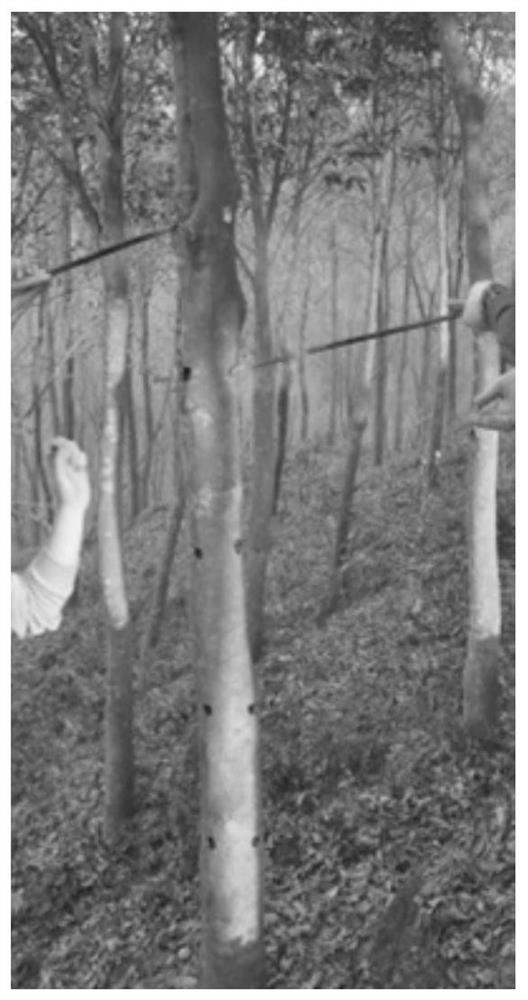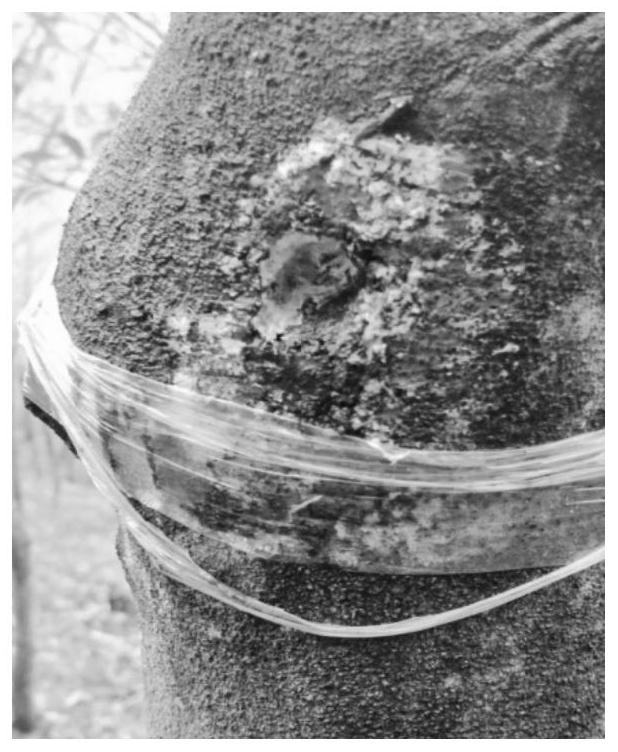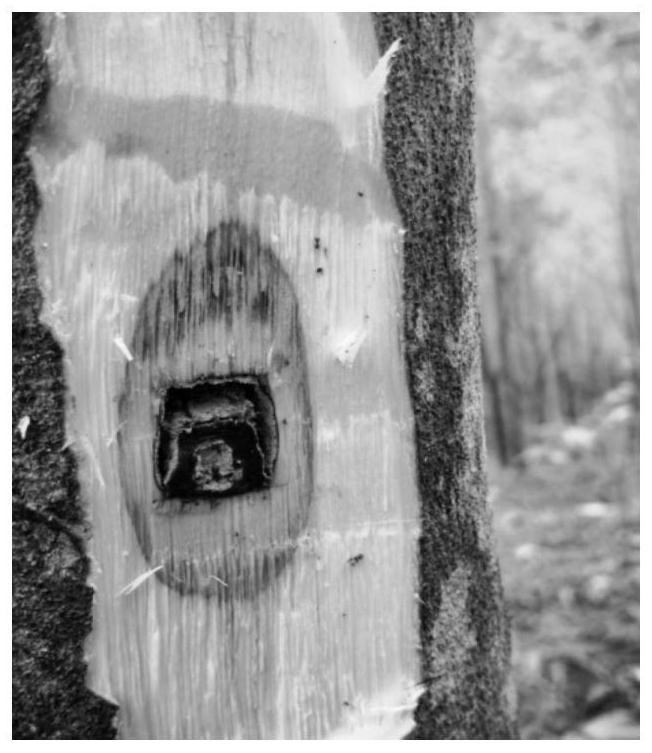A kind of biophysical method and application of inducing Agarwood to form fragrance
A biophysical and soil agarwood technology, applied in the field of biological agriculture, can solve the problems of low yield of agarwood, uneven quality, long period of incense formation, etc., and achieve the effects of short breeding cycle, low cost and strong practicability.
- Summary
- Abstract
- Description
- Claims
- Application Information
AI Technical Summary
Problems solved by technology
Method used
Image
Examples
Embodiment 1
[0054] Longan scorching rot fungus D2-2, Fusarium solani P13-1 and Trichoderma nigerioderma 3-4 used in the present invention have been described in the literature "Song Xiaochen et al. Combined inorganic salts, hormones and fungi to induce agarwood anti-stress Ability research, "Plant Research", 2019, Vol.39(4): 505-513".
[0055] 1. Preparation of Agarwood
[0056] (1) Inoculate PDA solid culture medium with scorch rot fungus D2-2 and Fusarium solani P13-1 respectively, and culture at 28° C. for 4 to 5 days.
[0057] (2) Choose a sunny day in July, choose an 8-year-old Agarwood tree with a diameter at breast height of 10.2cm, and chisel four 2.5cm long, 2.5cm wide, and deep 2cm grooves, and then do the same operation at intervals of 30cm along the trunk length, a total of 24 grooves are chiseled. Insert a completely red-hot iron block into the groove, stay for 30s, repeat 3 to 4 times, completely burn the xylem of Aquilaria sinensis until black, the preparation effect of t...
Embodiment 2
[0069] 1. Preparation of Agarwood
[0070] (1) Inoculate PDA solid culture medium with scorch rot fungus D2-2 and Fusarium solani P13-1 respectively, and culture at 28° C. for 4 to 5 days.
[0071] (2) Choose a sunny day in August, and choose a 10-year-old Agarwood tree with a DBH of 12.7 cm. At 50cm from the ground, at the same height of the trunk, and at a horizontal interval of 5.0cm, use a chisel to chisel out five 3.0cm long, 2.5cm wide, and 3.0cm deep, and then do the same operation at intervals of 30cm along the trunk lengthwise, and chisel out 30 concave holes in total. groove. Insert a completely red-hot iron block into the groove, stay for 40 seconds, repeat 4 to 5 times, completely burn the xylem of Aquilaria sinensis until black. After the groove is lowered to normal temperature, the PDA solid medium cultured longan scorch rot fungus D2-2 and Fusarium solani P13-1 mycelium together with the substrate (the mycelium is covered in the substrate), according to the vo...
Embodiment 3
[0083] 1. Preparation of Agarwood
[0084] (1) Inoculate PDA solid culture medium with scorch rot fungus D2-2 and Fusarium solani P13-1 respectively, and culture at 28° C. for 4 to 5 days. Inoculate Trichoderma nigerovides horse 3-4 into PDB liquid medium, and culture at 28° C. and 120 rpm for 7 days.
[0085] (2) Choose a sunny day in September, and choose a 10-year-old Agarwood tree with a DBH of 11.1 cm. At a distance of 50cm from the ground and at the same height, use a chisel to chisel out five grooves with a length of 2.5cm, a width of 2.0cm, and a depth of 2.5cm at an equal interval of 4.5cm, and then do the same operation every 30cm along the radial direction of the trunk. A total of 30 grooves were chiseled. Insert a completely red-hot iron block into the groove for 40 seconds, repeat 3-4 times, completely burn the woody part of the agarwood to black. After the groove was down to normal temperature, the longan scorch rot fungus D2-2 and the Fusarium solani P13-1 my...
PUM
 Login to View More
Login to View More Abstract
Description
Claims
Application Information
 Login to View More
Login to View More - R&D
- Intellectual Property
- Life Sciences
- Materials
- Tech Scout
- Unparalleled Data Quality
- Higher Quality Content
- 60% Fewer Hallucinations
Browse by: Latest US Patents, China's latest patents, Technical Efficacy Thesaurus, Application Domain, Technology Topic, Popular Technical Reports.
© 2025 PatSnap. All rights reserved.Legal|Privacy policy|Modern Slavery Act Transparency Statement|Sitemap|About US| Contact US: help@patsnap.com



